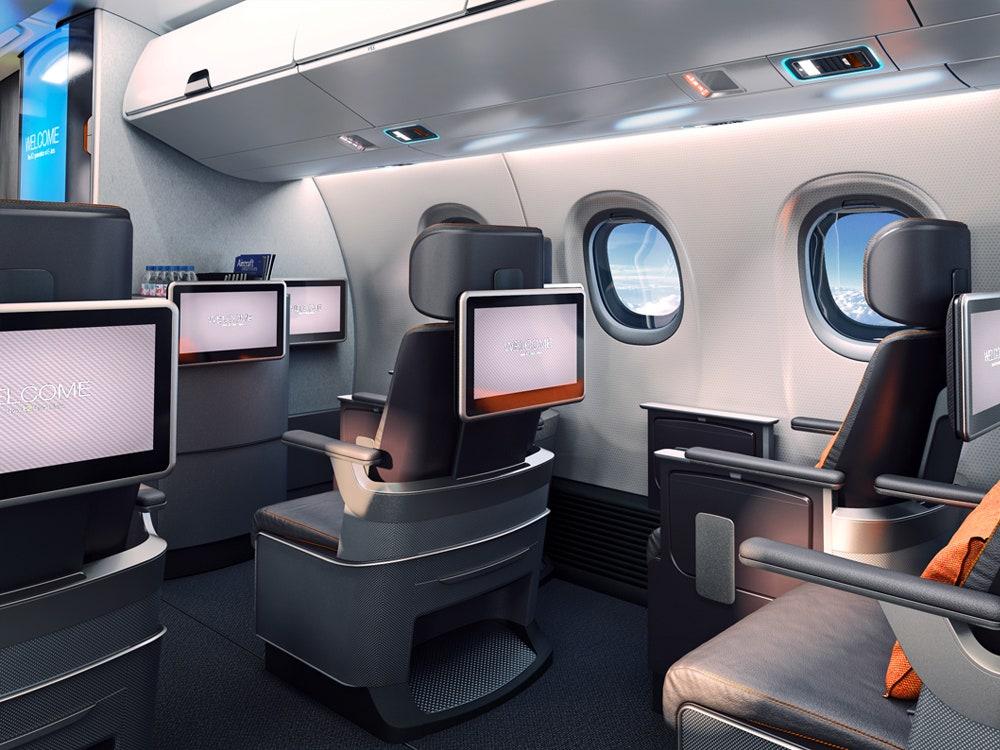An Ingenious Plane Design That Makes Room for Your Carry-Ons
There needs to be a word for that special mix of frustration and boredom that accompanies having to check your carry-on bags, and then waiting for them to be unloaded. But we'll probably never get one. So what if we could eliminate that feeling altogether?
London-based design firm Priestmangoode, working for Brazilian aircraft manufacturer Embraer Air, has solved the problem of carry-on storage once and for all. The new Embraer Air E2 narrow body jet has enough bin space to ensure that every passenger can fit a roll-aboard bag above their seat. "The objective was to increase the bin capacity whilst not taking away personal space from the passenger area," says design director Paul Priestman.

How did they achieve this mid-air miracle? It turns out the problem has been the personal service units, or PSU's in airplane parlance. These are the modules that houses the fasten seatbelt sign, call button, reading light, air nozzle, and oxygen mask. Most planes have a monolithic unit that spans all the seats in a cluster, which makes installation easier, but also limits the amount of space in the stowage area above it. Priestmangoode developed a patent-pending single seat PSU that allows for more flexibility in how they can be arranged, resulting in 40% more bin space. The outer face of the PSU also received a makeover that transformed a utilitarian hodgepodge into an object that looks a bit like an iPhone.
Beyond the bins, Priestmangoode wanted to make the cabin feel more spacious. Staggering seats in first class allowed the designers to preserve precious, high-margin legroom while utilizing the same bins and seat rails as the economy classes, which keeps the sight-lines clear and reduces cost. The doors of the bins were modeled to spoon the cabin's ceiling, a detail few could articulate, but one that helps imbue the space with a sense of nerve-calming serenity.
JetBlue sparked a revolution by including a TV in their seat backs, but in the intervening decade, consumer electronics have made those tiny screens look antique. "Looking at the current passenger and how they bring on their own device, it is apparent that a place to hold your tablet is more important than giving the passenger a screen," says Priestman. "Additionally, this allows airlines not to be restricted as technology develops and moves on so quickly."
Finally, PriestmanGoode turned their attention to fixtures and surface finishes with a goal of making the plane feel less like a flying prison cell. Glass tiles, touchless water faucets, acoustic linings, and soft close doors make the lavatories feel like mini-hotels rather than overlarge petri dishes.
The new Embraer jet is scheduled to take off in 2018.








